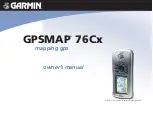
LEA-5, NEO-5, TIM-5H - Hardware Integration Manual
GPS.G5-MS5-09027-A2
Released
Design-in
Page 41 of 68
2.6.4
Active antenna bias power (LEA-5H/5S/5A/5T, TIM-5H)
There are two ways to supply the bias voltage to pin
V_ANT
. It can be supplied externally (please consider the
datasheet specification) or internally. For Internal supply, the
VCC_RF
output must be connected to
V_ANT
to
supply the antenna with a filtered supply voltage. However, the voltage specification of the antenna has to
match the actual supply voltage of the u-blox 5 Receiver (e.g. 3.0 V).
u-blox 5 Module
GND
RF_IN
GND
Active Antenna
V_ANT
VCC_RF
LNA
external
antenna
voltage
supply
R_BIAS
u-blox 5 Module
GND
RF_IN
GND
Active Antenna
V_ANT
VCC_RF
LNA
R_BIAS
Figure 33: Supplying Antenna bias voltage (for exact pin orientation see data sheet)
Since the bias voltage is fed into the most sensitive part of the receiver, i.e. the RF input, this supply should be
virtually free of noise. Usually, low frequency noise is less critical than digital noise with spurious frequencies with
harmonics up to the GPS/GALILEO band of 1.575 GHz. Therefore, it is not recommended to use digital supply
nets to feed pin
V_ANT
.
An internal switch (under control of the u-blox 5 software) can shut down the supply to the external antenna
whenever it is not needed. This feature helps to reduce power consumption.
2.6.4.1
Short circuit protection
If a reasonably dimensioned series resistor
R_BIAS
is placed in front of pin
V_ANT
, a short circuit situation can
be detected by the baseband processor. If such a situation is detected, the baseband processor will shut down
supply to the antenna. The receiver is by default configured to attempt to reestablish antenna power supply
periodically.
To configure the antenna supervisor use the UBX-CFG-ANT message. For further information refer to
the
u-blox 5 Receiver Description including Protocol Specification [2].
References
Value
Tolerance
Description
Manufacturer
R_BIAS
10
10%
Resistor, min 0.250 W
Table 8: Short circuit protection, bill of material
Short circuits on the antenna input without limitation of the current can result in permanent
damage to the receiver! Therefore, it’s recommended to implement an R_BIAS in all risk
applications, such as situations where the antenna can be disconnected by the end-user or that
have long antenna cables.
An additional R_BIAS is not required when using a short and open active antenna supervisor circuitry as
defined in
Section 2.6.5.1
, as the R_BIAS is equal to R2.














































